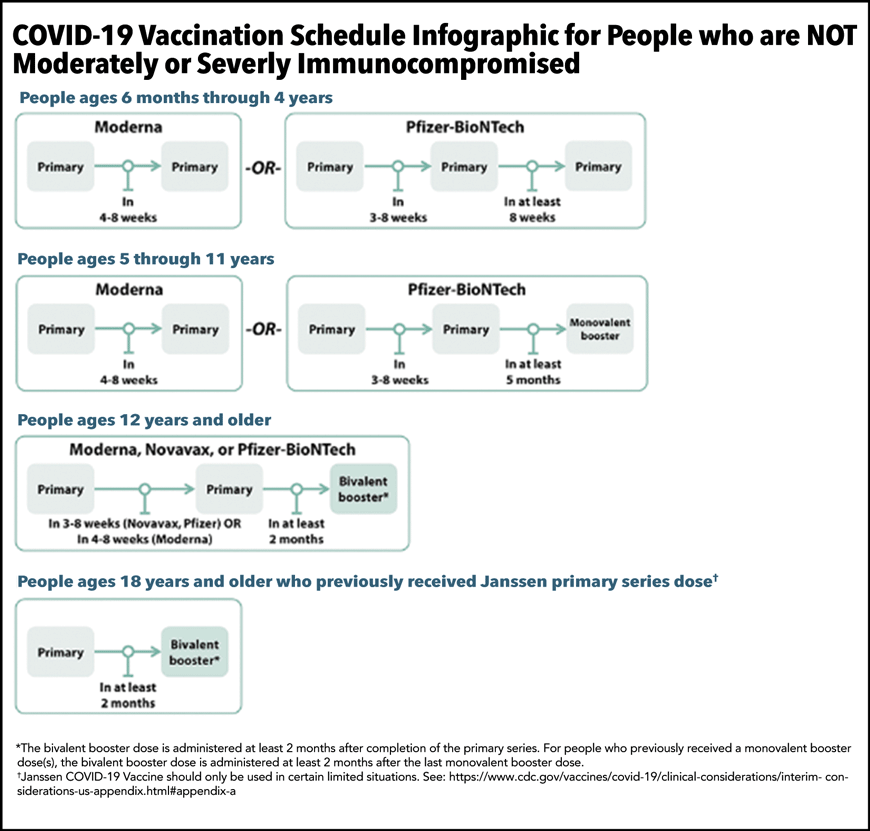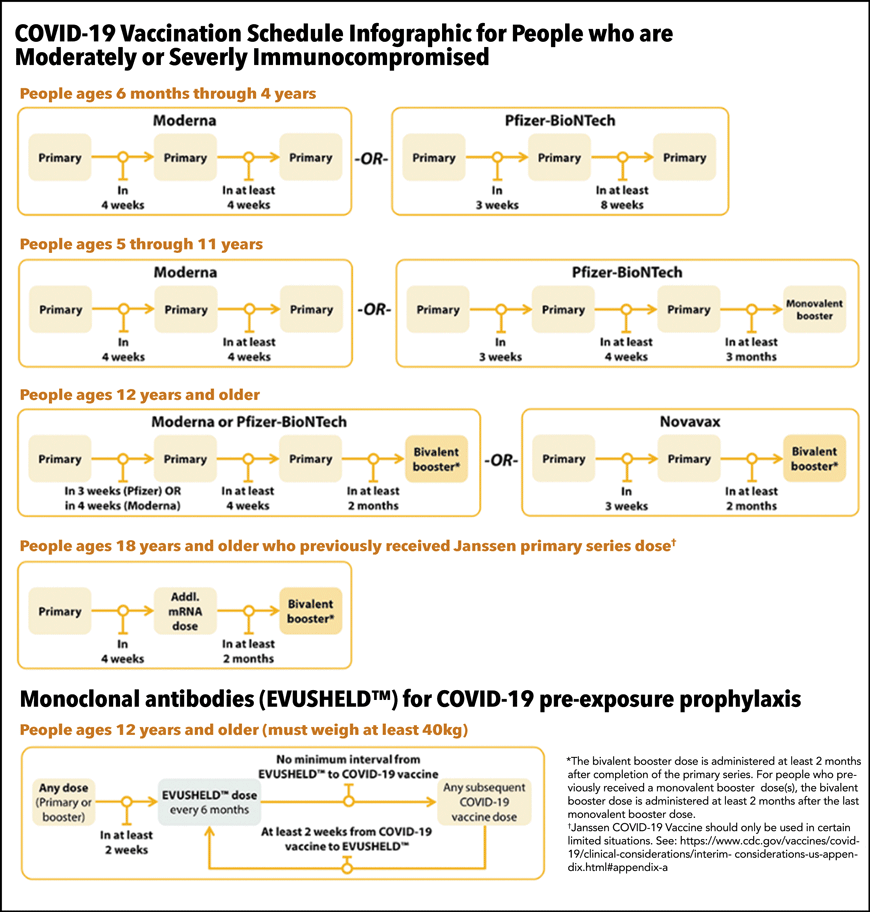![]()
NOW: Best Time to Get the New Bivalent Covid Vaccine
Errol Buntuyan, M.D., FAAFP
It has been a month since the FDA released the COVID Bivalent boosters for ages twelve and up. So far, the vaccination rates for this booster shot have been lower than desired. There hasn’t been as much demand for the vaccine as we had hoped. Early data shows just over eleven million Americans — or about 4 percent of those eligible — have received the new Bivalent booster shots. Only a third of adults say they eventually plan to get these shots. Many experts are encouraging everyone twelve and older to get the new Bivalent booster to prepare for the upcoming winter season of illnesses.
Right now, it seems people are trying to enjoy the last bit of warmth and sunshine during the Fall months of the year. The air temperature will soon start to turn cooler going into rainy seasons and turn frigid on the mainland by the end of the year, forcing people to be indoors to gather again. People gathering indoors without masks will leave us vulnerable as they plan their Winter escape on the warm shores of Hawaii. Last year we saw the development of the Omicron variant emerge in the Fall months. By early 2022 Omicron surged throughout the nation. The lagging vaccination rate is also blamed as a major contributor to the high COVID mortality rate last winter and the continuing deaths of an average of more than four hundred Americans a day linked to the virus.
Experts are predicting something similar will happen this Fall and Winter seasons as we see the increase in indoor gathering activity. Getting vaccinated now will help reduce the spread of infection and the chance of a genetic shift that would produce a new variant in 2023. This Winter season has the potential to sicken millions and kills tens of thousands, particularly the elderly and sick. There’s a lack of urgency, however, which is the current typical view of many Americans, worn down by a never-ending pandemic and unsure about the next steps as the nation enters its third COVID Winter. Many have already been infected with COVID this summer and because of the mild symptoms, feel they do not need the booster. Some have stopped paying attention to health officials’ recommendations altogether, despite projections of a Fall and Winter COVID wave.
We have been fortunate the COVID Omicron variant has not morphed to a new variant yet. This year only subvariants of Omicron have emerged. The new Bivalent booster has the genetic programming for the spike proteins of two of these Omicron subvariants. These new Bivalent boosters are given to those who have received the primary (original formula) two dose series of either Moderna or Pfizer. Those who received prior additional shots of the original formula boosters are also eligible for the new Bivalent booster. Here is the COVID vaccination schedules from the CDC below.


The official recommendation from the CDC is boosters can be given as early as two months after the last booster or three months after the last infection. Many experts in the infectious disease world, however, think differently and recommend waiting for four months after the last booster/last infection. Canada, for example, is giving Bivalent vaccination starting at the six-month mark after the last injection or infection. This recommendation is a lot closer to the science to allow for the immunity to develop from the last shot or infection.
Once again, here are the recommendations for the Bivalent boosters for the various age groups:
Ages 6 months through 4 years should get all COVID-19 primary monovalent series doses. Boosters are not yet recommended for this age group.
Ages 5 years to 11 years old should get all primary monovalent series doses and updated COVID-19 monovalent boosters if eligible. Children ages 5 through 11 years who received a Pfizer-BioNTech primary series must also get Pfizer-BioNTech for a booster.
Ages twelve and up, after getting the original monovalent vaccine series completed, the only booster available is the new Bivalent booster. People ages 12 years and older can no longer obtain the original (monovalent) mRNA as a booster. Teens ages 12-17 years may receive a different product for a booster than they received for their primary series, as long as the Bivalent booster is Pfizer-BioNTech. People ages 18 years and older may receive a different product for a Bivalent booster than they received for their primary series.
For ages fifty and up and those immunocompromised, even if you have had the one or two prior monovalent vaccines as boosters, you are now eligible to receive this new Bivalent booster if it has been at least two months since your last COVID vaccine shot.
COVID-19 vaccines may be administered without regard to timing of other vaccines. This includes simultaneous administration of COVID-19 vaccine and other vaccines on the same day. There are additional considerations, however, if administering an orthopoxvirus vaccine. People, particularly adolescent or young adult males, might consider waiting four weeks after orthopoxvirus vaccination to receive a Bivalent booster due to studies showing an increased risk of temporary heart inflammation.
These Bivalent COVID boosters are now available island wide at various locations. You may contact your health care provider’s office or community clinic and your local pharmacy (Walgreen’s, CVS, Safeway and Costco) on how to get them. Many facilities will give these vaccinations on a walk-in basis and no appointment is needed.
Don’t let booster fatigue keep you from getting the Bivalent vaccine. It is better to get protected from serious COVID illness in the coming months. As another holiday season arrives since the pandemic started, we want to once again have the confidence we have done our part in not only protecting ourselves but the loved ones around us.
 Errol Buntuyan, M.D. is a Family Medicine Practitioner and the Physician in Charge of Maui Primary Care at Kaiser Permanente. Born in Quezon City and raised in Southern California, he has been practicing medicine on Maui since 2007. Dr. Buntuyan promotes whole food, plant based nutrition, regular physical activity, stress mindfulness and sleep hygiene as keys to optimum health and wellness. He enjoys cooking, playing tennis and travel.
Errol Buntuyan, M.D. is a Family Medicine Practitioner and the Physician in Charge of Maui Primary Care at Kaiser Permanente. Born in Quezon City and raised in Southern California, he has been practicing medicine on Maui since 2007. Dr. Buntuyan promotes whole food, plant based nutrition, regular physical activity, stress mindfulness and sleep hygiene as keys to optimum health and wellness. He enjoys cooking, playing tennis and travel.
